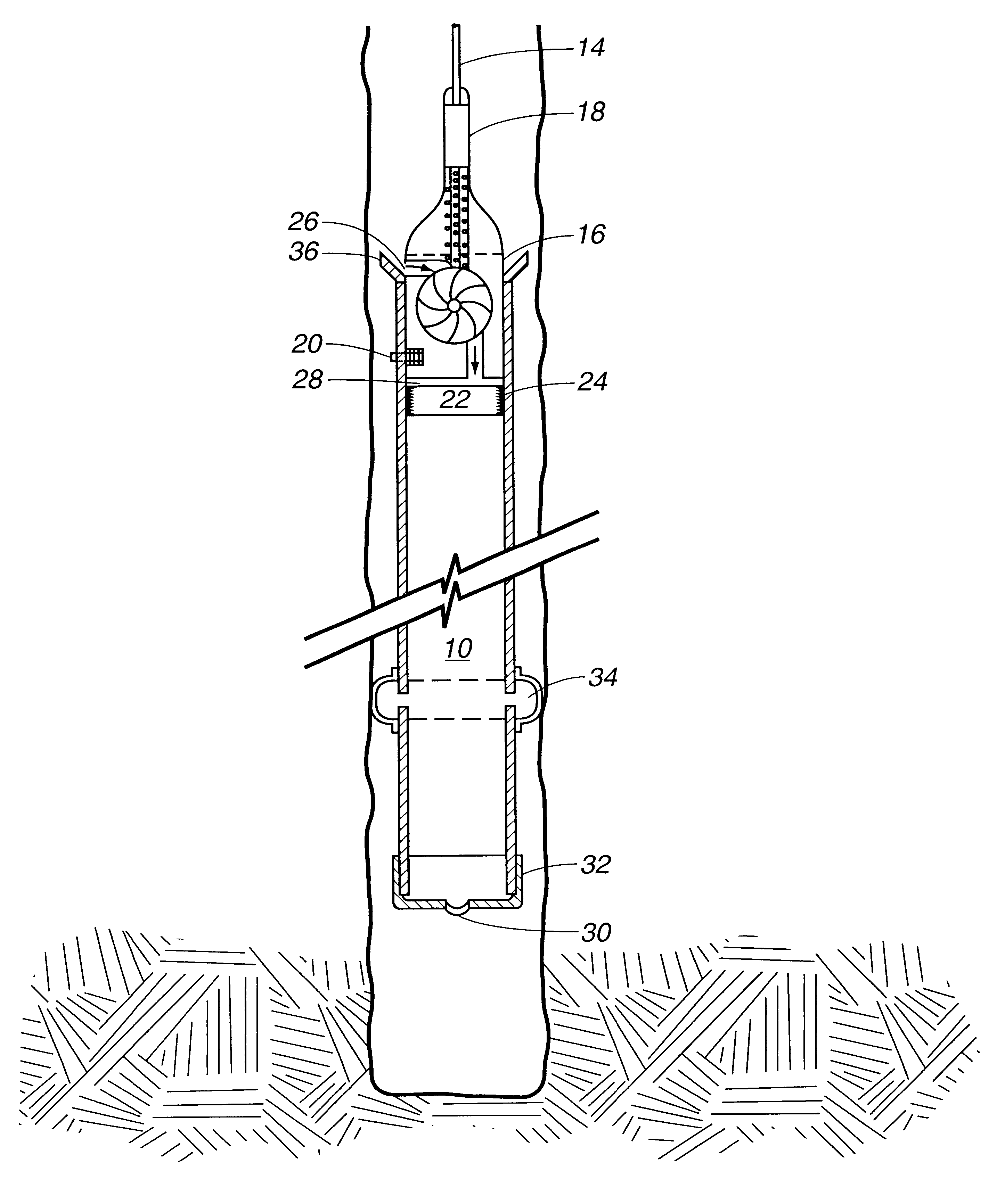Canister, sealing method and composition for sealing a borehole
a technology for sealing methods and boreholes, applied in the direction of sealing/packing, borehole/well accessories, survey, etc., can solve the problems of fluid loss, cement-based materials that do not bond well to earth materials, and cannot stay in place, etc., and achieve the effect of high strength
- Summary
- Abstract
- Description
- Claims
- Application Information
AI Technical Summary
Benefits of technology
Problems solved by technology
Method used
Image
Examples
example i
In a bench top demonstration of an invention slurry and sealant, a slurry was mixed and allowed to set up in a beaker filled with water.
An invention slurry was prepared by combining a total of 200 g of class-F fly ash, calcined magnesium oxide and monopotassium phosphate in a 60:9:31 ratio. The 200 g mixture was stirred in 20 g of water for about 20 minutes. The slurry had started reacting and had formed a thick paste. The thickened slurry was then poured into a beaker and allowed to set for about 60 minutes.
After the slurry had solidified, hot water at a temperature of 90.degree. C. was poured onto the set slurry. The beaker was maintained at 90.degree. C. on a hot plate for about 30 minutes. The slurry did not dissolve or react in the water.
Then 220 g of a second slurry was prepared in the same manner as the first slurry with the same ratio of components.
After about 30 minutes the second slurry had started to react and thicken. The second slurry was poured into the hot water in th...
example ii
In another bench top demonstration of the invention, setting time as a function of temperature was measured.
A 220 g portion of slurry was prepared in the same manner as the slurries in Example I and in the same proportions of components. The beaker in which the slurry was prepared was then lowered into a water bath maintained at a temperature of 60.degree. C. and the time of setting was measured by determining the time that the slurry took to form a hardened monolith.
The procedure was repeated at temperatures of 70.degree. C., 80.degree. C., and 90.degree. C. Each time the setting time was measured. Setting times decreased as temperatures increased, ranging from a setting time of about 70 minutes at 60.degree. C. to a setting time of about 35 minutes at 90.degree. C. The results of this test of an invention slurry are shown in the graph of FIG. 9.
example iii
An invention slurry prepared in the same manner as that prepared in Example I and having the same ratio of components was poured into polyethelene beakers containing sandstone, limestone and granite rocks. The rocks were several inches in size and of the sort typically found in oilfield drilling environments.
The slurry in each of the beakers was allowed to set for a day, during which time it formed into monoliths with the rocks as inclusions. The monoliths were removed from the beakers.
A diamond tipped saw was used to cut the monoliths into cross sections. In each case the slurry had formed into a sealant which encapsulated the rocks with no gaps at the interface between the rock surfaces and the slurry. In fact, the slurry had penetrated into the pores in the surfaces of the rocks forming a tight bond and excellent seal with the rocks. A cross section of this is shown in the photograph of FIG. 10.
While the methods and compositions of this invention have been described in detail for...
PUM
| Property | Measurement | Unit |
|---|---|---|
| Volume | aaaaa | aaaaa |
| Strength | aaaaa | aaaaa |
| Circumference | aaaaa | aaaaa |
Abstract
Description
Claims
Application Information
 Login to View More
Login to View More - R&D
- Intellectual Property
- Life Sciences
- Materials
- Tech Scout
- Unparalleled Data Quality
- Higher Quality Content
- 60% Fewer Hallucinations
Browse by: Latest US Patents, China's latest patents, Technical Efficacy Thesaurus, Application Domain, Technology Topic, Popular Technical Reports.
© 2025 PatSnap. All rights reserved.Legal|Privacy policy|Modern Slavery Act Transparency Statement|Sitemap|About US| Contact US: help@patsnap.com



